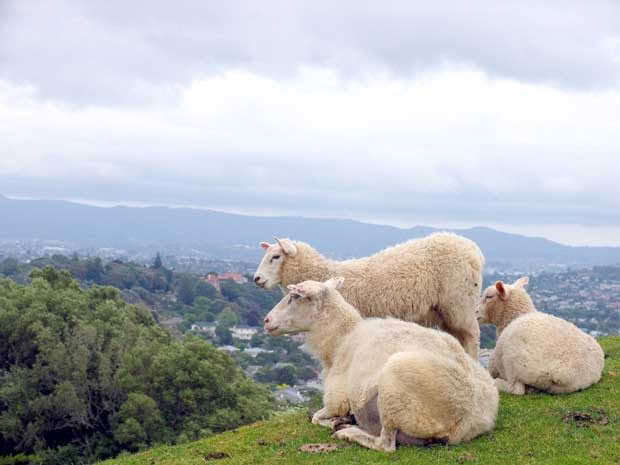Caring for sheep during the colder months

The unseasonably hot summer means farmers should keep a close eye on ewes this winter.
Words: Clive Dalton
It’s going to be a tough winter for sheep as many will have lost condition during the long summer and won’t have had enough time or feed to restore it. Managing skinny ewes through winter (mid-pregnancy) will not be easy, and they’ll certainly need more than meager winter pasture. This is because modern high fertility ewes are genetically wired to carry multiple lambs which have a massive nutrient draw on a ewe’s metabolism.
Skinny ewes have lower lamb birth weights and more lamb deaths due to exposure and starvation, and they are more likely to go down with metabolic diseases (milk fever, staggers, sleepy sickness) and die. Have the correct products ready for such cases as you need a rapid response.
Silage and hay won’t restore enough condition in the time available before lambing so you will need to buy grain-based concentrates which are expensive. Make sure they are fed in troughs with plenty of space for all animals to get a fair share and there is no waste. Whole barley and oats are best crushed before feeding. Don’t feed wheat to sheep.
Wool covers up a lot of protruding bones, so learn to condition score ewes properly. If ewes are to be winter-shorn, check with your shearer as they may be too thin to shear. All shorn ewes need good feed and shelter for a couple of days after shearing.
Hoggets that took the ram will need extra special care over winter if feed is short, and really will need concentrates to keep them growing.
If any young sheep start to scour, don’t assume they have worms and need a drench. Only drench on the basis of a Faecal Egg Count (FEC) and vet advice. Even if they have a FEC over 500eggs/g of faeces and are thriving, avoid drenching them. There should be no need to drench any ewes for worms, so be wary of advertising hype and sales promotions. If they are not thriving, check their teeth as grass length will be short this winter.
If you put a harness on the rams, you’ll have a good idea of which ewes will be first to lamb so you can give them priority concentrate feed for 4-6 weeks pre-lambing. Late lambing ewes can be given lower priority.
If some ewes didn’t cycle at all they could be cashed for meat.
TIPS FOR CARING FOR SHEEP IN WINTER
• Check the body condition score of all ewes.
• Sort out a feeding regime so ewes are fit for lambing.
• Give the best feed to ewes that will lamb in the first round.
• Check if ewes are fit to be shorn. Winter-shorn ewes need extra care including shelter and good feed.
• Wool ideally needs to be 100mm long. Prepare the wool properly by removing all dags, belly wool and all short, stained and raddled pieces.
• Don’t drench any sheep without checking FECs with your vet.
• Cull all sheep with chronic footrot.
• If sheep are seen rubbing on fence wires and posts, check for lice and get vet advice on what product to use.
• Sheep can also pug pastures in wet weather so have a dry, well-drained area for them.
• When feeding out hay or silage, avoid putting it in large heaps as it will encourage pugging and waste.
• Make sure any rams after mating are not neglected as they need to build up their body condition too. Don’t winter any rams you don’t want to keep.
• Watch for early signs of metabolic diseases and have urgent treatment products ready.
• Remember, if you have to euthanase any sheep, this must be done according to the Sheep Code of Welfare. See www.mpi.govt.nz
 This article first appeared in NZ Lifestyle Block Magazine.
This article first appeared in NZ Lifestyle Block Magazine.
